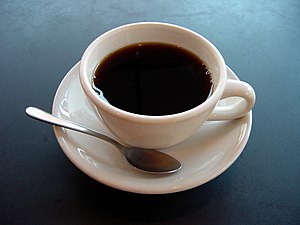| English: A photo of a cup of coffee. Esperanto: Taso de kafo. Français : Photo d'une tasse de caffé Español: Taza de café (Photo credit: Wikipedia) |
Chicago, Feb.22, trading stocks .- “Have you ever heard of the coffee can portfolio?” I was having lunch with Preston Athey, the outstanding investor behind T. Rowe Price’s Small-Cap Value Fund (PRSVX), when he asked me this question.
I had heard of it, which I think surprised him a little because I was only 12 years old when it came out, and it is not a mainstream idea. I knew all about it, though, because the coffee can portfolio is one of those classic ideas that aficionados of finance don’t forget.
I want to tell you about the coffee can portfolio in what follows. You won’t find an easier or more effective way to manage your stocks than this. I also want to enlist your help in a little project that Preston suggested.
It all began with Robert Kirby, then a portfolio manager at Capital Group. He first wrote about the coffee can idea in fall 1984 in The Journal of Portfolio Management. “The coffee can portfolio concept harkens back to the Old West, when people put their valuable possessions in a coffee can and kept it under the mattress,” Kirby wrote. “The success of the program depended entirely on the wisdom and foresight used to select the objects to be placed in the coffee can to begin with.”
The idea is simple enough: You find the best stocks you can and let them sit for 10 years. You incur practically no costs with such a portfolio. And it is certainly easy to manage. The biggest benefit, though, is a bit more subtle and meaningful. It works because it keeps your worst instincts from hurting you. In his paper, Kirby told the story about how his idea came about.
“The coffee can idea first occurred to me in the 1950s,” Kirby writes. Then he worked for a big firm that counseled individuals on their investments. He had a client he worked with for 10 years whose husband died suddenly. She inherited his stock portfolio, which she moved to Kirby’s care. Looking at the portfolio, Kirby writes:
| I was amused to find that he had been secretly piggybacking our recommendations for his wife’s portfolio. Then I looked at the size of the estate. I was also shocked. The husband had applied a small twist of his own to our advice: He paid no attention whatsoever to the sale recommendations. He simply put about $5,000 in every purchase recommendation. Then he would toss the certificate in his safe-deposit box and forget it. |
That is an inspiring tale, a triumph of lethargy and sloth. It shows clearly how the coffee can portfolio is designed to protect you against yourself — the obsession with checking stock prices, the frenetic buying and selling, the hand-wringing over the economy and bad news. It forces you to extend your time horizon. You don’t put anything in your coffee can that you don’t think is a good 10-year bet.
Poor Kirby had been diligently managing the wife’s account — keep up with earnings reports, trimming stocks and adding new positions. All the while, he would have been better off if he followed the idler’s creed and just held onto his ideas.
This example reminds me of the work of Thomas W. Phelps, much- forgotten investment thinker who has since become one of my favorites. I praised this remarkable investor about a year ago, right here in The Daily Reckoning. (If you missed it the first time, you can check it out here: The Value of a Thief). Like Kirby, Phelps also believed in the power of “buying right and holding on.”
Why don’t more people hold fast? Phelps writes that investors have been conditioned to measure stock price performance on a quarterly or annual basis, but not business performance. One memorable example he uses (among many) is Pfizer, whose stock lost ground from 1946-49 and again from 1951-56. “Performance-minded clients would have chewed the ears off an investment adviser who let them get caught with such a dog,” Phelps wrote. But investors who held on from 1942- 1972 made 141 times their money.
Phelps shows that if you just looked at the annual financial figures for Pfizer — ignoring the news, the stock market, economic forecasts and all the rest — you would never have sold the stock. It was profitable throughout, generating good returns on equity, with earnings climbing fitfully ever higher. Pfizer was a good coffee can stock.
So what stocks would you put in your coffee can today?
Preston Athey offered up Markel (NYSE:MKL) as his coffee can stock. Markel is an insurer and has a long-term track record as a winner. Investors are up over 2,000% since 1990. I am currently giving Markel a thorough look-through. The stock trades for $489 per share. Don’t let the high price throw you. As Preston pointed out, Markel is like a little Berkshire Hathaway. (Warren Buffett’s famous investment vehicle trades for $132,000 per share!) The key is what you get for what you pay. MKL trades for only 1.2 times book value, as compared with a long-term historical average of two times book. Insurance stocks are depressed. And as the cycle turns, you stand to gain not only as MKL’s book value increases, but also as the market restores the higher multiple on that book.
I am giving more thought to the coffee can portfolio and what I’d stash in it. What about you? What stock (or stocks) would you put in your coffee can?
I look forward to your thoughts....


No comments:
Post a Comment